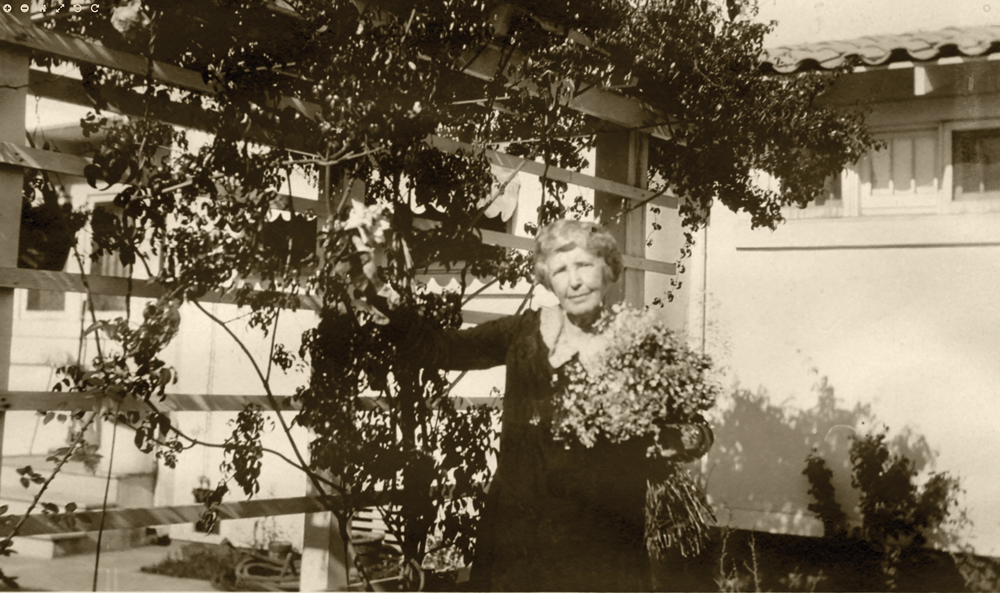Legendary Nevadans: Helen Stewart
Summer 2023
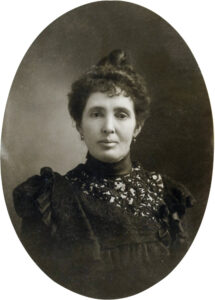
The First Lady of Las Vegas earned her honorary title.
From adventurers and gunslingers to writers and thinkers, Nevada’s history was shaped by individuals with grit and drive. Each issue, we look at one of these notable heroes from the past. Whether born or raised, these aren’t just Nevadans: they’re Legendary Nevadans.
On a quiet day in March 1926, businesses in Las Vegas shuttered their doors. Local schools closed and the federal post office was deserted. Most of the city’s residents were attending the funeral of Helen Jane Wiser Stewart. The homage paid to Stewart by the city she helped create would have surprised the unassuming woman. But the legacy of her strength, character, intelligence, and spirit was evident to all who knew her.
A TEMPORARY PLACE
Helen Wiser was born in Illinois on April 16, 1854. At 18, she married Archibald Stewart and moved to his ranch in Lincoln County, about 30 miles north of Pioche. A social person, living in remote Nevada was tough for Helen. After the birth of their first child in 1874, she convinced Archibald to move to Pioche, which had a lively population of about 7,000. Helen loved being surrounded by friends and acquaintances, and the couple had two more children while living there. In 1879, a fateful loan made by Archibald would change Helen’s life forever.
Octavius Gass was unable to pay the taxes on his 640-acre ranch, Los Vegas Rancho—the spelling was so the ranch wouldn’t be confused with Las Vegas, New Mexico. Archibald lent his friend $5,000, but when poor weather subsequently destroyed the ranch’s crops, the loan went unpaid, and Archibald foreclosed. He was given the ranch and an additional 320 acres, plus cows, mules, and sheep.
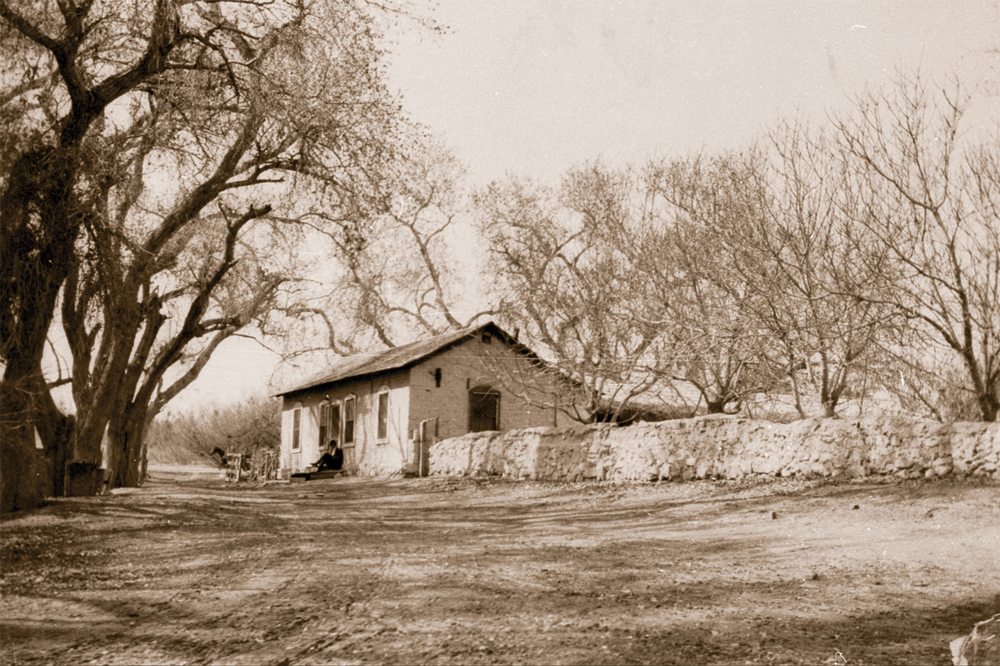
In 1882, the Stewarts moved 180 miles south. A pregnant Helen was upset at being once again on an isolated ranch, but her husband promised it was only temporary.
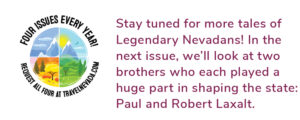 LIFE AT LOS VEGAS RANCHO
LIFE AT LOS VEGAS RANCHO
The Stewarts’ new home was a small ranch house amid the hot and dusty desert that seemed to stretch in every direction. The arid landscape would have been more daunting if it weren’t for the spring that bubbled up on the ranch. Despite the tough soil, Helen grew fruit and vegetable crops, which she sold to local miners. The ranch raised cattle and horses and its cottonwood trees provided much-needed respite for travelers. It became a stop for people traveling between Utah and California, and Helen welcomed the visitors and their company.
Life at Los Vegas wasn’t what she’d hoped for, but Helen made the best of it. Now with four children, the family’s life was a busy one with the ranch and frequent visitors. However, life was about to change for Helen once again.
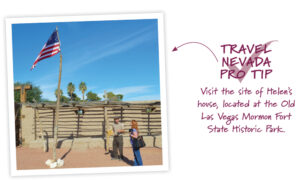 STANDING HER GROUND
STANDING HER GROUND
In July 1884, Archibald was away when a hired hand named Schyler Henry suddenly quit and demanded pay for his work immediately. Helen refused, saying Archibald would deal with the issue when he returned. Henry grew more and more abusive, but Helen refused to pay him. He finally left, taking refuge at nearby Kiel Ranch.
Archibald returned a few days later and was furious to hear of Henry’s threats. He grabbed his rifle and headed to Kiel Ranch. Helen wasn’t sure where her husband had gone, but a note delivered just hours after he left made it clear. The poorly spelled note read: “Mrs. Sturd send a team and take Mr. Sturd away he is dead.”
Helen set off on horseback and found Archibald, shot through the head. Suddenly alone and pregnant with her fifth child, Helen—just 30 years old—discovered Archibald had no will. She went to court to secure ownership of the family home, eventually winning a judgment that split the ranch between her and her children.
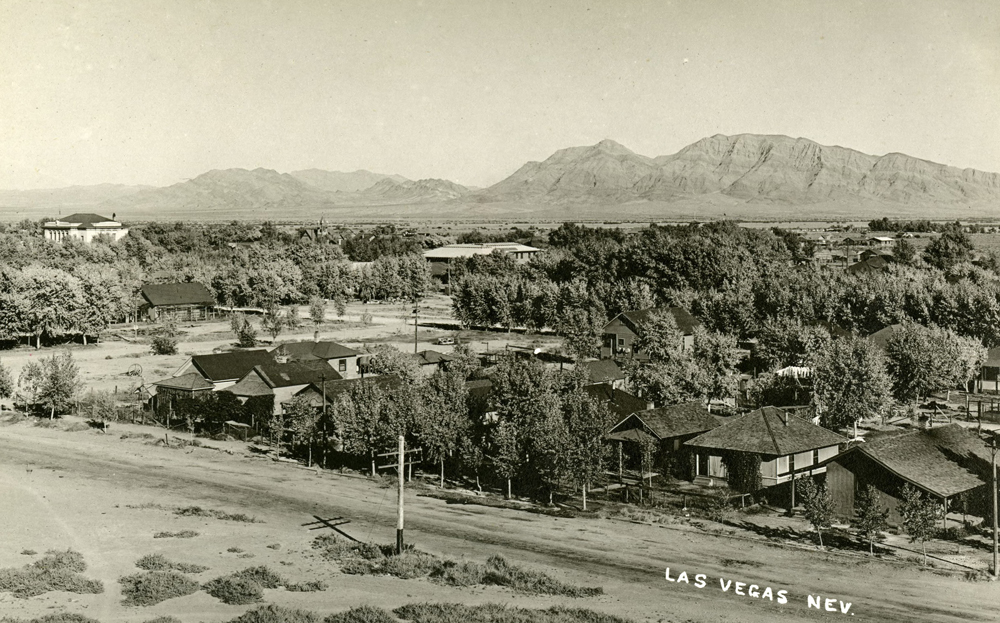
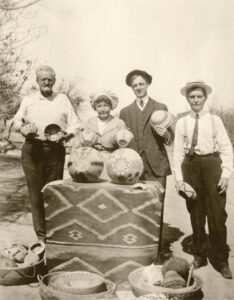
BREAKING THE MOLD
Despite having no business experience, Helen proved an adept manager. She worked alongside the ranch hands and the local Paiutes, just as her husband had. When Helen heard rumors about a railroad being built between Southern California and Utah, she began buying land. She became the largest landowner in the county with more than 1,800 acres of land, including water rights.
The Stewart ranch was a center of activity. Helen’s home became a voting site in 1890 and the first official post office in 1893. She even served as the postmistress in 1903, the same year the ranch’s name was officially changed to Las Vegas.
In 1902, Helen sold most of the ranch to the San Pedro, Los Angeles & Salt Lake Railroad. The railroad was coming, and Helen’s land paved the way. The new line was completed in 1905, and the railroad sold the last of land that was previously Helen’s ranch on May 15. About 1,200 plots of land were auctioned in two days. Downtown Las Vegas was born.
Helen kept the plot where her husband and one son were buried and purchased 280 more acres on which to build a new home. During construction, she lived in Los Angeles, and it was there that she married Frank Stewart (no relation). Never one to accept the constraints of the times, Helen refused to marry without a prenuptial agreement that would safeguard her land and money for her children.
A college graduate, Helen was always a proponent of education and served as a member of the Clark County School Board. In 1916, she was elected to the state board of education, and in 1922, she donated the land for the city’s first school building: It was the first public school attended by the local Paiute. Helen served on Clark County’s first jury that included women, was the first president of the Nevada Historical Society’s southern Nevada chapter, and helped found the Society of Nevada Pioneers.
Helen Stewart died of cancer on March 6, 1926, at the age of 72. Her death certificate noted she was a historian, which speaks volumes about the work she did. Years after her death, a friend of Helen’s called her The First Lady of Las Vegas, a title she truly deserved.
